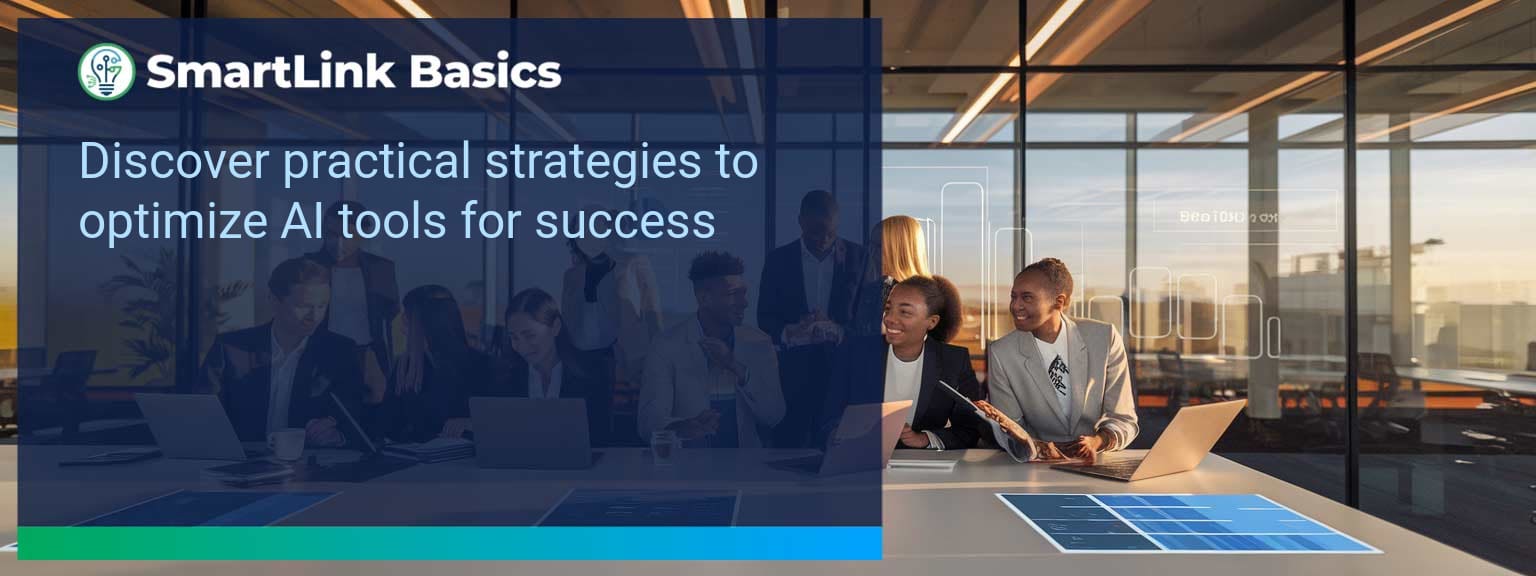Sales teams using artificial intelligence to streamline processes can see productivity gains of 20–30%, according to a 2024 McKinsey report. For leaders, the value of AI tools efficiency lies not only in automation but in optimizing them for outcomes that matter most to revenue growth. At SmartLink Basics, we’ve observed that organizations which align AI adoption with strategic sales goals are those seeing the clearest performance lifts. This article outlines specific methods to boost productivity with AI, from diagnosing workflow bottlenecks to designing future-ready operating systems. You will learn how to balance automation with human decision-making, apply AI for business growth, and prepare for emerging machine learning applications that will redefine competitive advantage.
- Audit existing workflows to identify AI integration points
- Prioritize AI tools that directly impact revenue metrics
- Align automation with sales plays and customer touchpoints
- Track both efficiency and quality metrics post-implementation
- Prepare for advances in AI automation and smart technology adoption
Identifying Barriers To Productivity In AI Tools Efficiency
Managers often implement AI without first diagnosing systemic process issues. This leads to automation of inefficiencies rather than improvements in performance. Common friction points include outdated CRM integrations, fragmented data repositories, and unclear ownership of AI-related workflows. Outdated pipeline structures can cause AI scoring models to produce misleading outputs. A sales team using lead-scoring AI without refining input criteria may chase low-conversion prospects, reducing ROI. The practical step is to run a workflow mapping exercise across marketing, sales, and customer success before introducing or expanding AI systems. This ensures AI amplifies what is already working instead of scaling misaligned processes.Leveraging Technology For Smarter Workflows And AI Tools Efficiency
Once barriers are visible, the priority becomes selecting AI tools that target them directly. Tools supporting workflow optimization through predictive analytics, automated outreach, and intelligent reporting provide measurable results faster than vague all-in-one platforms. For example, a B2B SaaS firm integrated machine learning applications into lead routing, reducing manual assignment delays from 36 hours to under two. This not only improved average deal velocity but also enhanced rep satisfaction. The actionable move is to pilot AI tools in one defined segment before company-wide adoption. Small-scale implementation allows testing of value hypotheses and refinement of automation rules before scaling.Achieving Significant Gains In Performance
When AI tools are embedded into the revenue operating system with clarity, teams often report both efficiency and accuracy improvements. Performance gains are most visible in reduced admin workload per rep, higher lead-to-opportunity conversion rate, and improved forecast reliability. One enterprise reduced email drafting time by 50% using AI-assisted templates while maintaining personalization standards. The result was an increase of 18% in first-meeting bookings over one quarter. Leaders should define and track both leading and lagging indicators, making data-driven adjustments to AI workflows in real time.| Category | Metric | Definition | Target |
|---|---|---|---|
| Leading | AI-Scored Leads | % of leads meeting AI qualification threshold | ≥80% |
| Lagging | Conversion Rate | % of AI-qualified leads that close | ≥30% |
| Quality | Customer Satisfaction | Post-purchase NPS score from AI-assisted touchpoints | ≥60 |
Future Trends In Technology Adoption
The next wave of AI in sales will center on real-time adaptive systems, where AI adjusts strategies mid-campaign based on live inputs. Advances in natural language processing and contextual personalization will make automated messaging nearly indistinguishable from human outreach. Digital transformation efforts will integrate AI into every stage of the customer lifecycle, supported by unified data lakes and smart technology platforms. This will shift the competitive advantage from tool ownership to speed of strategic implementation. To prepare, leaders must invest in both AI literacy and flexible architectures capable of leveraging emerging capabilities without costly overhauls. For more on integrating these capabilities, see expert insights from SmartLink Basics.Get the 90-day plan, coaching rubric, and dashboard template to operationalize AI in your enablement program.









